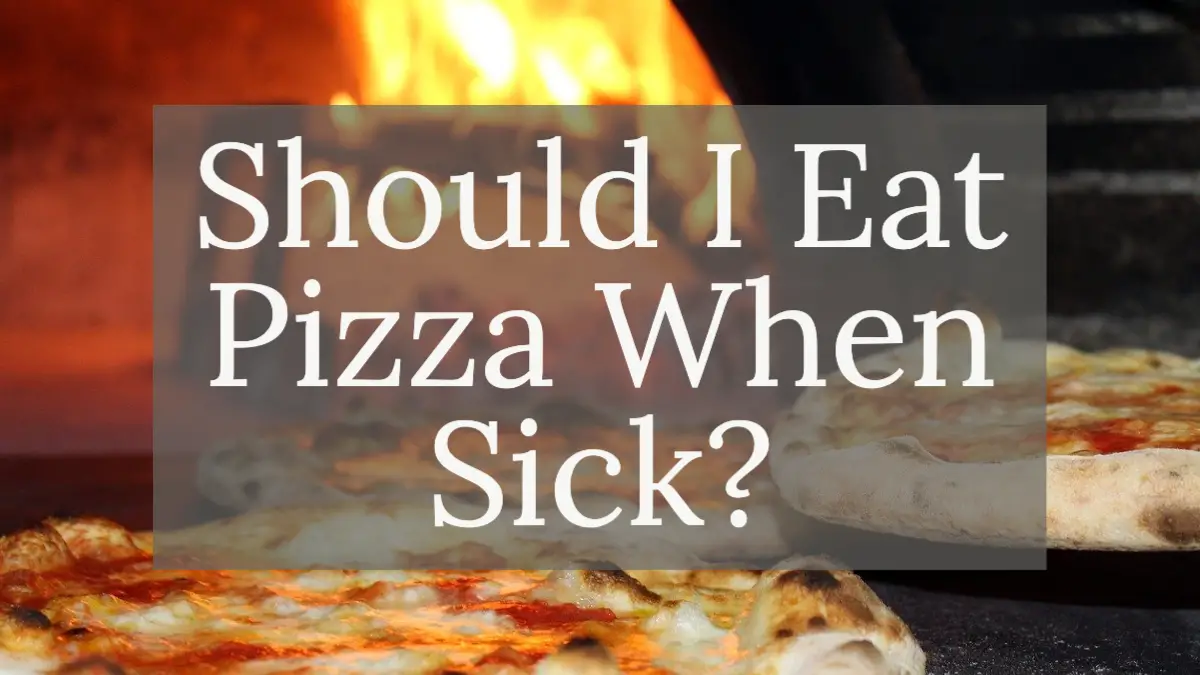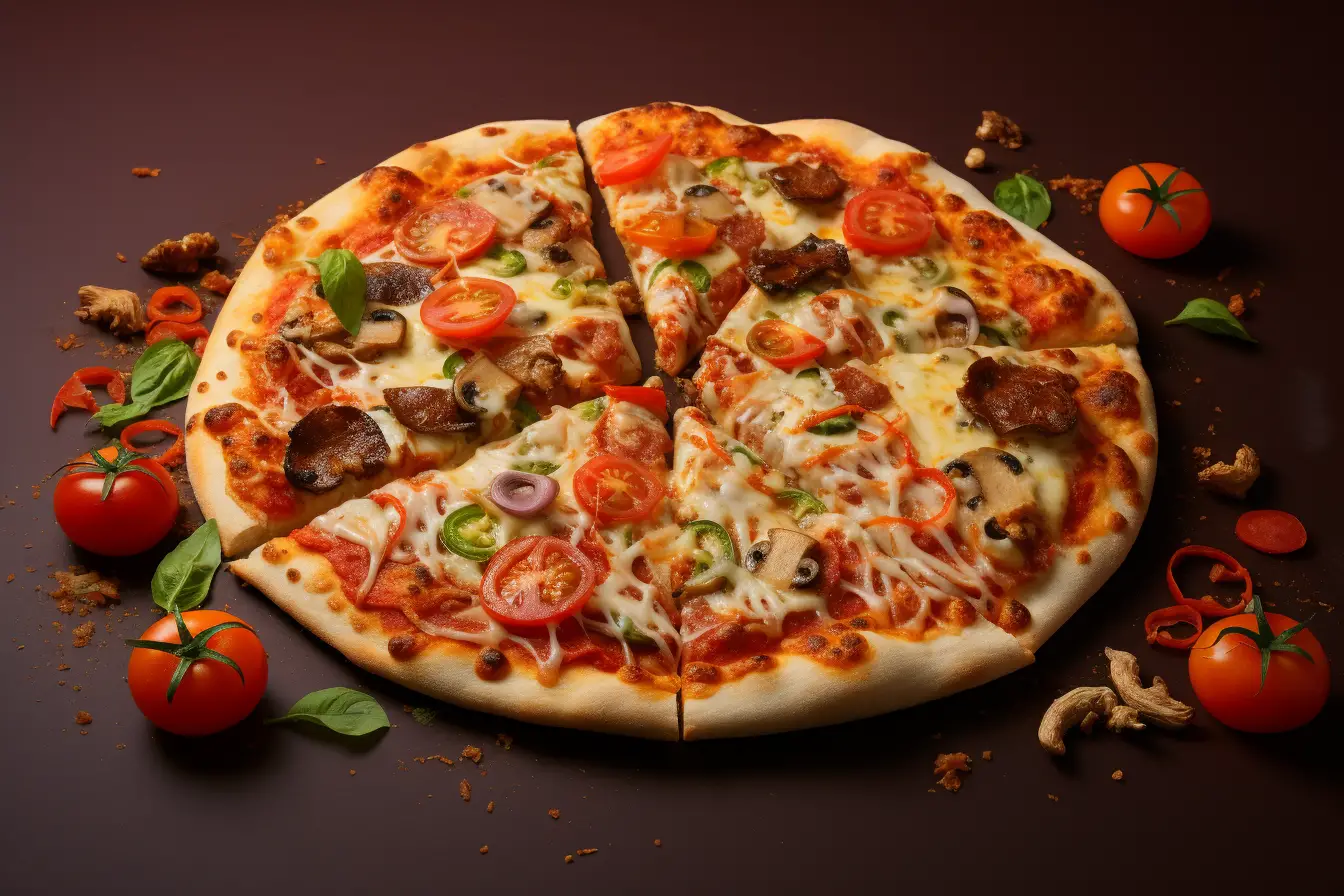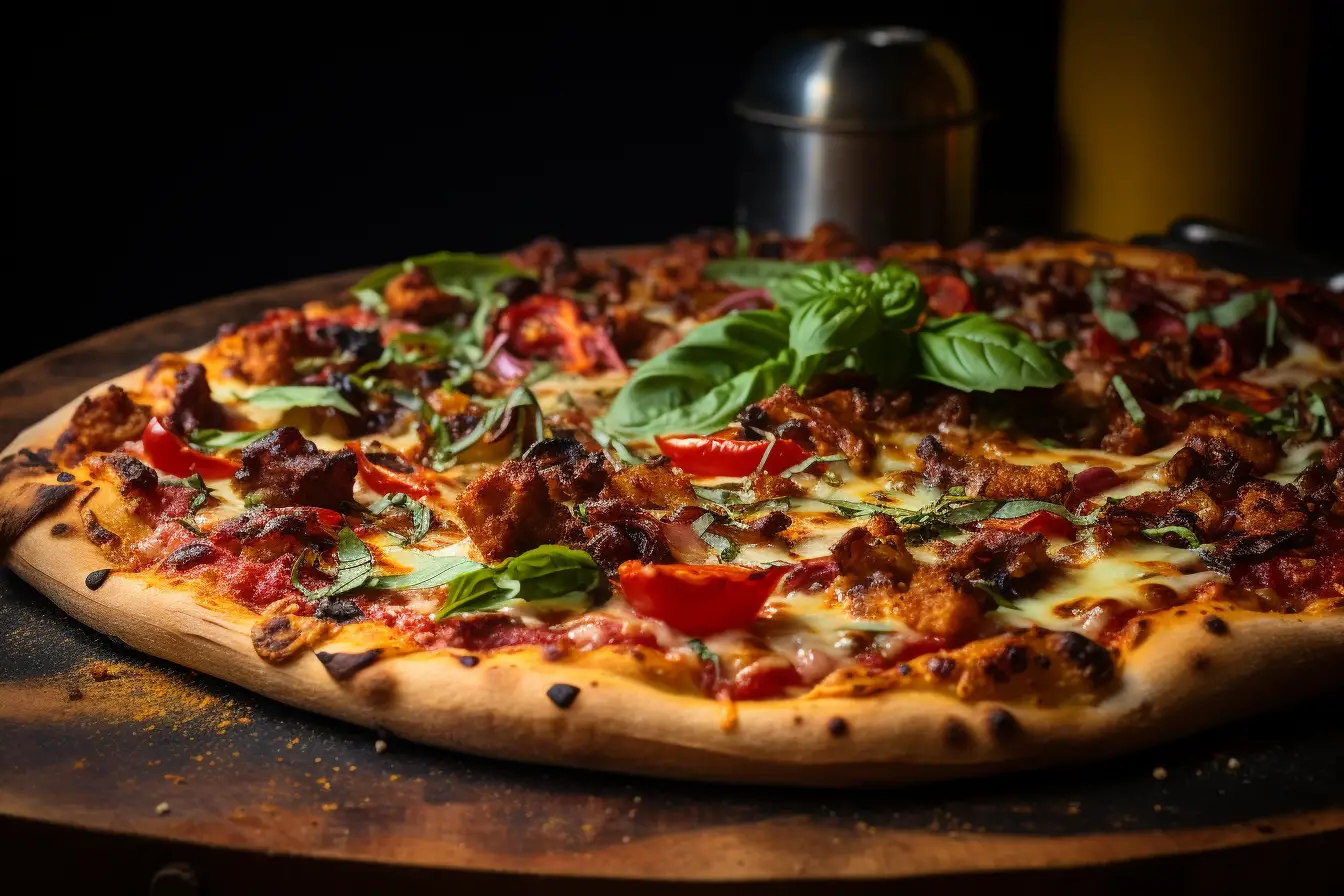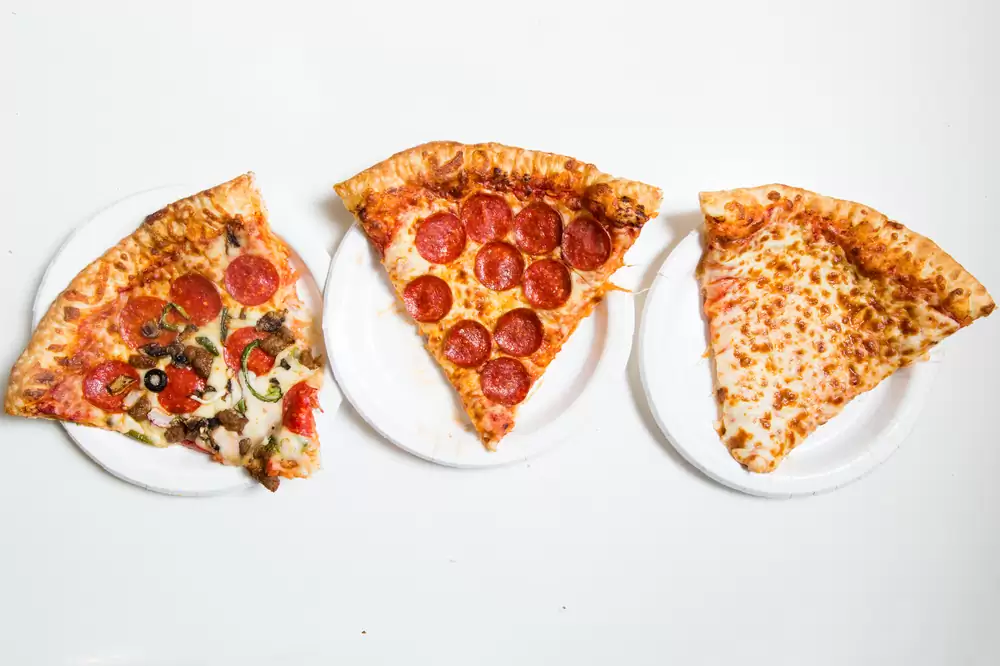It’s a classic dilemma – you’re laid up sick with a cold or flu and don’t feel like cooking.temptation of delivery pizza calls, promising comforting, convenient calories. But is pizza really a wise food choice when you’re under the weather?
There are pros and cons to eating everyone’s favorite cheesy pie when sick. Before deciding, here are 5 key factors to weigh regarding how pizza may impact your condition and recovery.
Yes, you can eat pizza when sick, however, it’s important to consider the 5 factors below to ensure you don’t make things worse than they already are!

How Pizza Impacts Your Appetite and Calories
Appetite loss often accompanies colds and flu. But you still require nourishment to keep up strength and energy.
Pizza may seem appealing as an easy way to get calories and carbs when sick. But too much greasy pizza can also suppress your appetite further or upset an already finicky flu stomach.
Pizza Provides Quick Calories
One potential perk of pizza for sickness is that it supplies a substantial dose of calories and energy when you may have little appetite.
A couple slices can give 500 calories or more. The bread and cheese provide carbs and protein to help maintain your blood sugar levels.
This rapid energy infusion can curb hunger, giving your body the fuel it needs to rest and heal.
Pizza can be one of the quickest and most convenient sources of calories when sick and unable to shop and cook.
A few slices may energize and satiate when you don’t feel like preparing elaborate meals.
But Beware of Greasy Overload
While the influx of calories can be beneficial, too much greasy pizza can also backfire and suppress appetite further.
Loads of melty cheese, pepperoni, sausage, and buttery crust dripping in oil may seem delicious. But feeling already nauseous or feverish can amplify pizza’s fatty richness.
Scarfing down multiple heavy, grease-laden slices could leave you even more turned off by the thought of food.
And if the sickness has digestive effects like vomiting, indigestion, or diarrhea, excess fat and spices could worsen symptoms.
It’s a fine balance – getting necessary calories from pizza without going overboard into greasy overload when appetites are impaired. Moderation and strategic ingredient choices are key.
Impacts on Hydration When Congested or Feverish
Illnesses like flu, colds, strep, and sinus infections often involve dehydration from fever, vomiting, diarrhea or overall lethargy to drink. Pizza’s high sodium content and cheesy proteins could potentially exacerbate dehydration issues.
Salty Ingredients Promote Fluid Loss
Common pizza toppings like pepperoni, sausage, bacon and extra cheese pack tons of sodium. The crust is generally high in salt too.
Excess sodium causes fluid flushing as the body attempts to dilute it. Eating salty foods when sick could worsen existing dehydration.
Dairy-heavy pizza is also filled with proteins and minerals that require lots of water to process and eliminate. Sick bodies already struggling with hydration could have more difficulty managing pizza’s salty, cheesy ingredients. This may promote even more fluid loss.
Pair Pizza With Plenty of Fluids
However, with smart preparation and choices, pizza can be part of a hydrating diet. The key is blocking the sodium’s dehydrating effects by flushing it with fluids.
Drink copious amounts of water, broths or electrolyte beverages when also consuming pizza.
Choose pies with less salty meats and extra cheese to cut sodium. Request a thin, crispy crust instead of chewy and oily to moderate fat and proteins.
Thoughtful pizza options accompanied by rehydrating liquids can energize without depleting fluids further.
Impacts on Congestion and Sinus Troubles
Chest congestion, sinus pressure, coughs and sore throats often accompany winter bugs. Dairy-laden pizza could worsen phlegm and mucus in some individuals. But the satisfying flavors and spices may also offer temporary relief.
Dairy Could Thicken Mucus
Pizza oozing with melted cheese provides major comfort food appeal. But some people find dairy products like milk, cheese, butter and cream trigger increased phlegm and mucus production. This compounds congestion and coughs when sick.
However, research on dairy thickening mucus is inconclusive. While many swear certain milks, cheeses or ice creams aggravate their symptoms, no clear scientific mechanism proves cause and effect.
Dairy may thicken existing mucus but doesn’t necessarily initiate excess secretions and congestion.
Spicy Toppings Can Clear Sinuses
While dairy may be neutral or detrimental for congestion, spicy pizza toppings offer some decongestant effects.
Peppers, chili flakes, onion and sausage can provide temporary sinus clearing and drainage. This could relief sinus pressure and breathing easier.
Additionally, warm, flavorsome pizza may soothe sore throats better than bland foods. The overall satisfaction of indulging cravings for pizza when sick could boost morale and comfort levels.
Even if dairy exacerbates phlegm, for some the tradeoff is worth it.
Impacts on Digestive System When Nauseous
Any stomach bug or nausea producing illness throws off normal digestion. Pizza’s blend of fat, carbs and protein with tomatoes, dairy and spices may help reset things. But excess grease could also irritate further.
Carbs, Fat and Protein Balance Nutrition
The carbohydrate-rich crust coupled with cheese proteins and fatty toppings make pizza a balanced meal.
Your compromised gut bacteria and digestive enzymes have an easier time breaking down this combo versus plants alone.
Tomato sauce also provides probiotics and nutrients. Light red sauce may be gentler than heavy white cheese or meats.
The familiar flavors can get finicky stomachs anticipating and kickstart digestion. Pizza delivers a satisfying meal to bring gut function closer to normal.
But Beware Heavy Toppings When Queasy
However, an already unsettled or nauseous stomach may reject pizza’s richness. Excess cheese and greasy pepperoni are obvious culprits.
But even healthy veggies like onions or mushrooms may overstimulate and irritate.
Sticking to lighter ingredients and reasonable portions allows you to get pizza’s balancing benefits without pushing overloaded digestion.
A simple cheese slice may settle better than a loaded everything pizza smothered in oily extras.
Impacts on Overall Immune Function and Recovery
The way pizza nourishes or taxes your resources directly impacts how your immune system fares. Can the right pizza boost immunity and healing? Or does it deplete and prolong sickness?
Rich Calories Provide Fuel for Healing
Pizza can support recovery by satisfying cravings and energizing the body to fight infection. Denying every craving and appetite when ill can be counterproductive.
The extra calories, carbs and fat from pizza provide fuel for the heightened immune response.
You burn extra energy with fever and while battling illness. Regularly replenishing with convenient pizza provides raw materials so your body keeps functioning.
Rest and appropriate strength are crucial for natural immune processes and healing.
But Excess Hinders Immune System Efficiency
However, going overboard on pizza binges will hinder not help recovery. Packing in too many heavy carbs, tons of fat and sodium stresses systems unnecessarily.
This diverts energy away from efficient immune function.
Additionally, loading up solely on pizza provides very limited vitamins and nutrients.
Your body requires a balanced diet with fruits, vegetables and lean proteins to optimize immunity. So enjoy wisely in moderation along with more wholesome foods for best illness recovery.
The Verdict: Eat Strategic Pizza In Moderation
Looking at all the considerations together, enjoying some pizza in careful moderation can be part of an effective sick day nutrition plan. Just follow these best practices:
- Stick to 1-2 moderate slices per serving so you don’t overload hunger or digestion
- Pick healthier veggie or margherita pizzas over fatty meats and excess cheese
- Always pair with plenty of fluids to counteract sodium dehydration
- Listen to your body and avoid styles that may worsen phlegm or nausea
- Eat pizza as part of a balanced healing diet with fruits, vegetables and lean proteins
Pizza certainly satisfies cravings and provides quick energy when sick. By making smart choices and not overdoing portion sizes, it can be a safe way to get calories without disturbing your condition further. But rely on pizza too heavily and you miss out on nutrients and hydration crucial for recovery.
Overall, as an occasional treat, pizza can be part of an effective plan when you’re under the weather. Just employ moderation and strategic ingredients catered to your symptoms. Get well soon!






